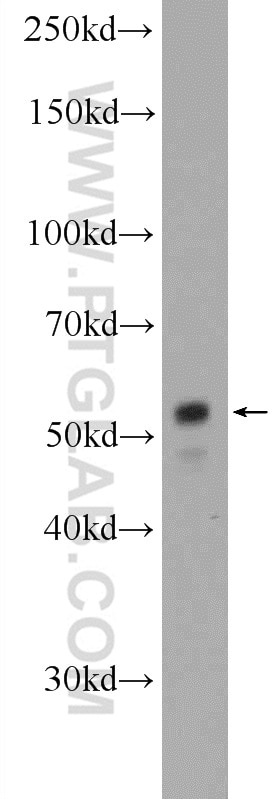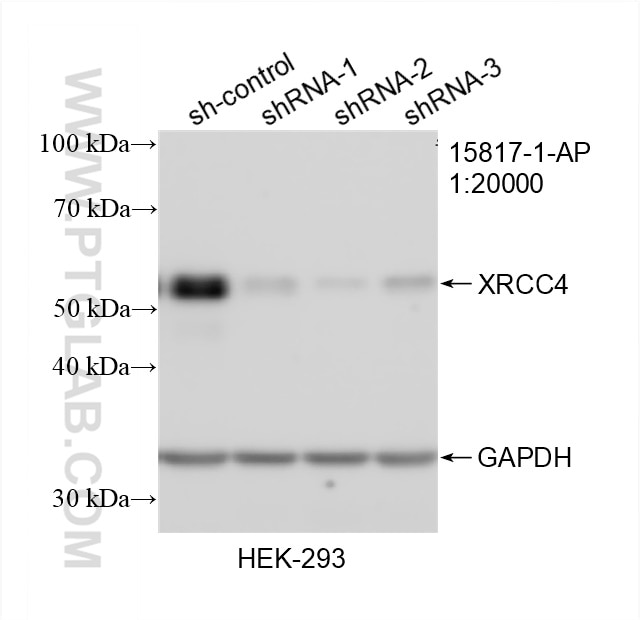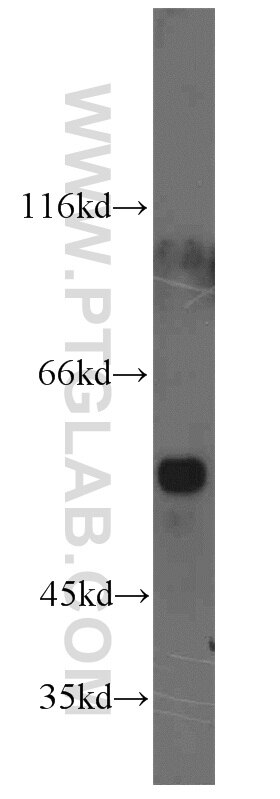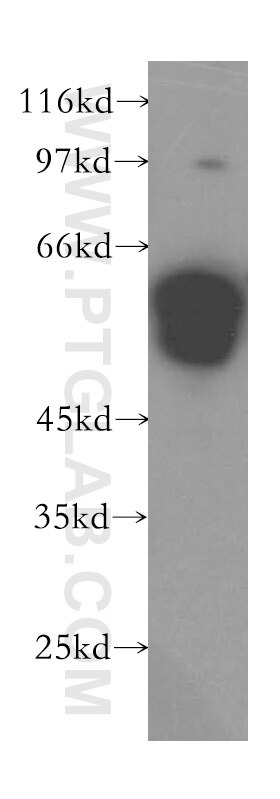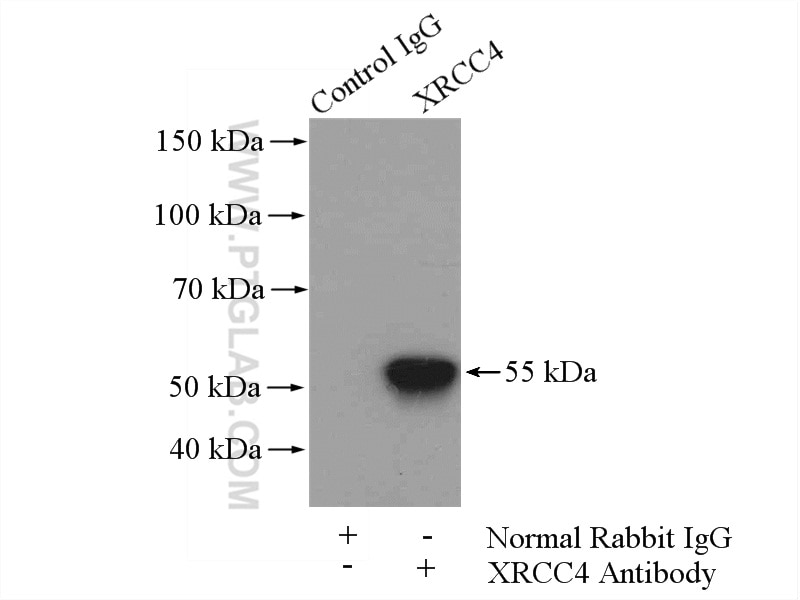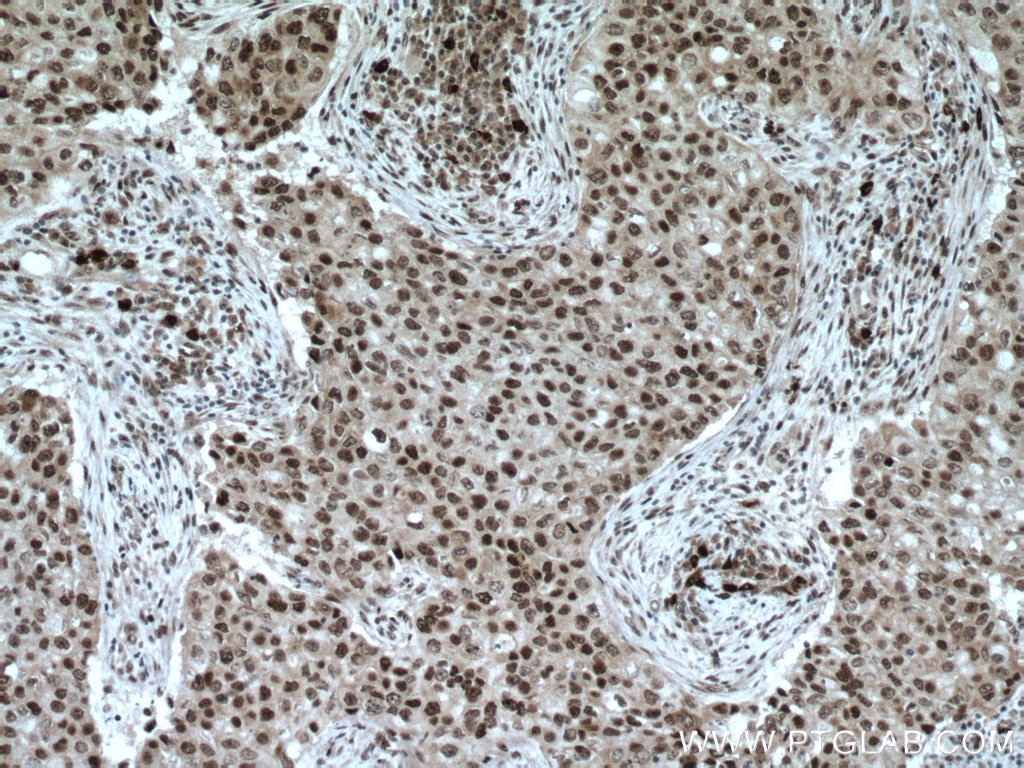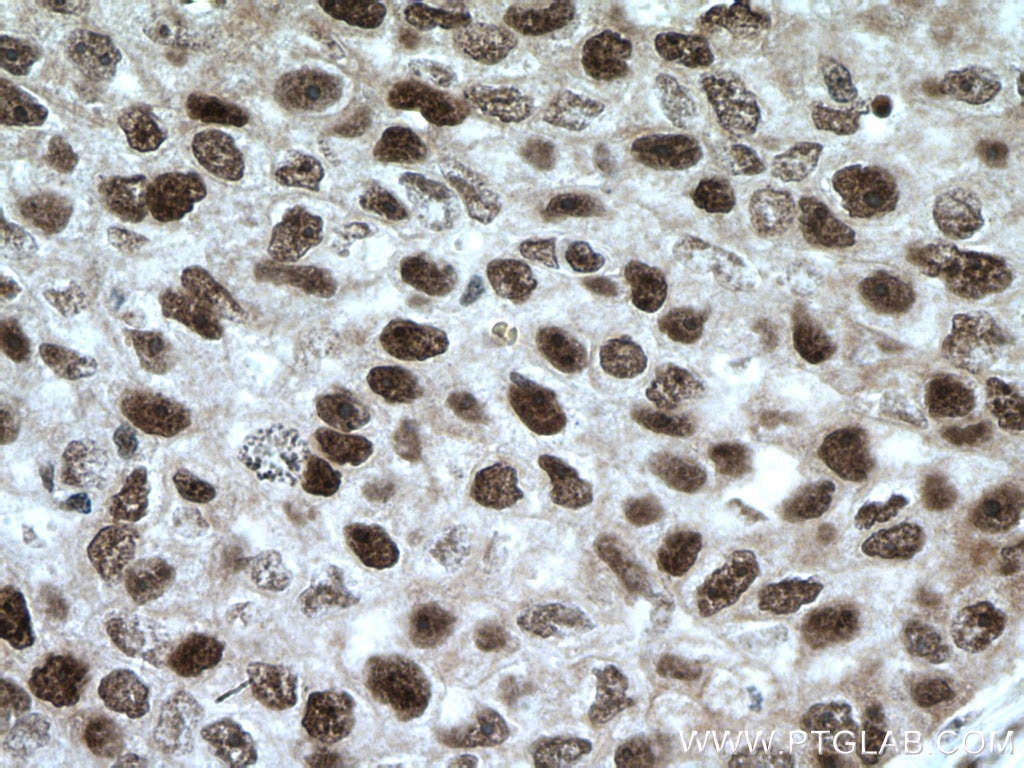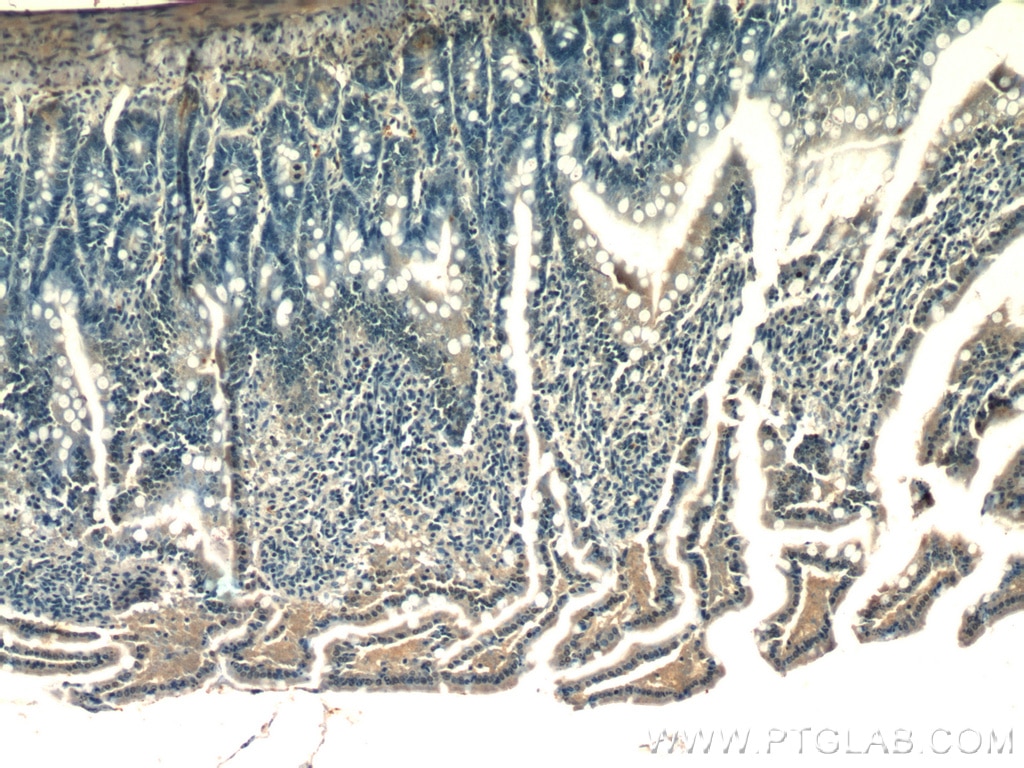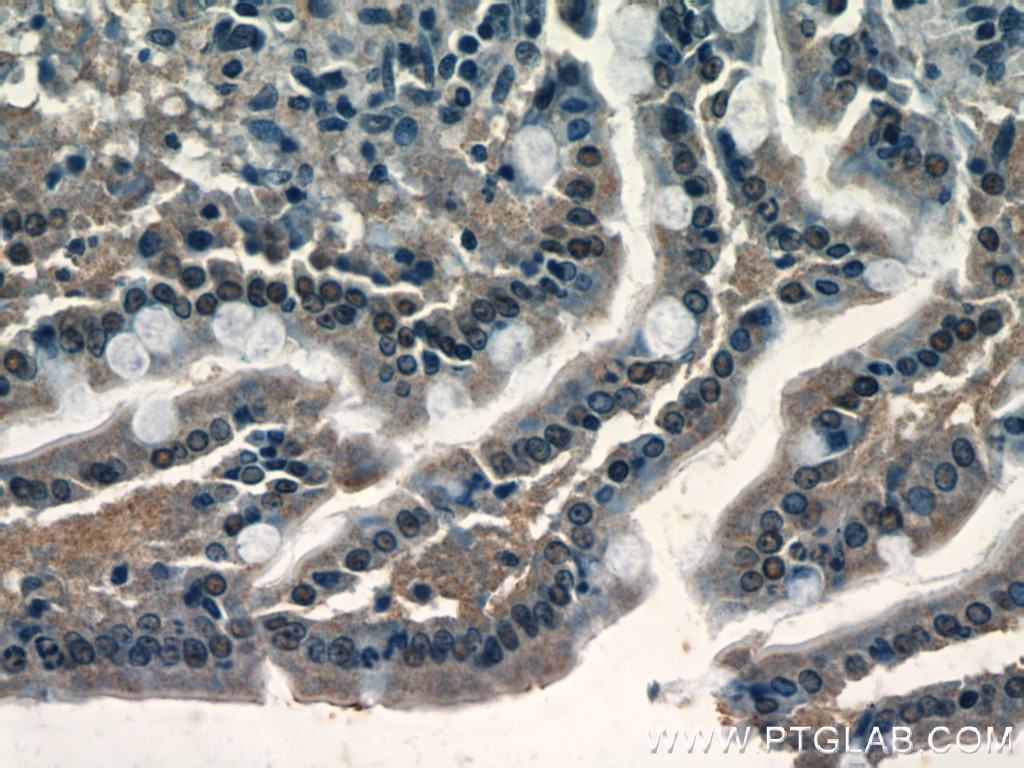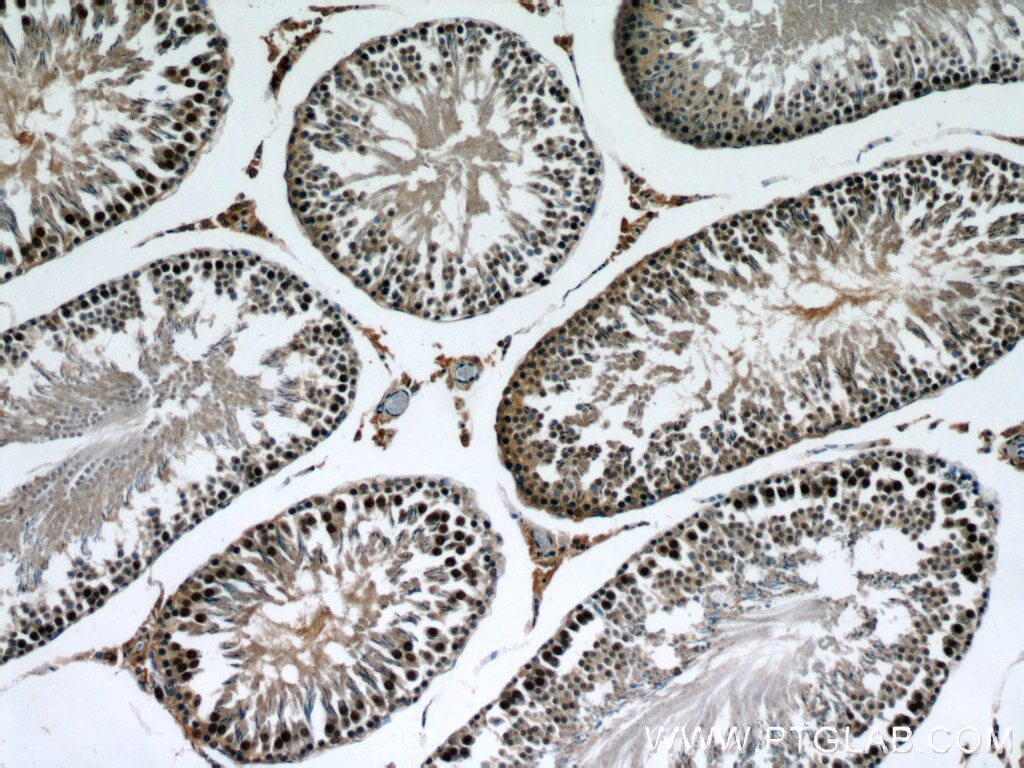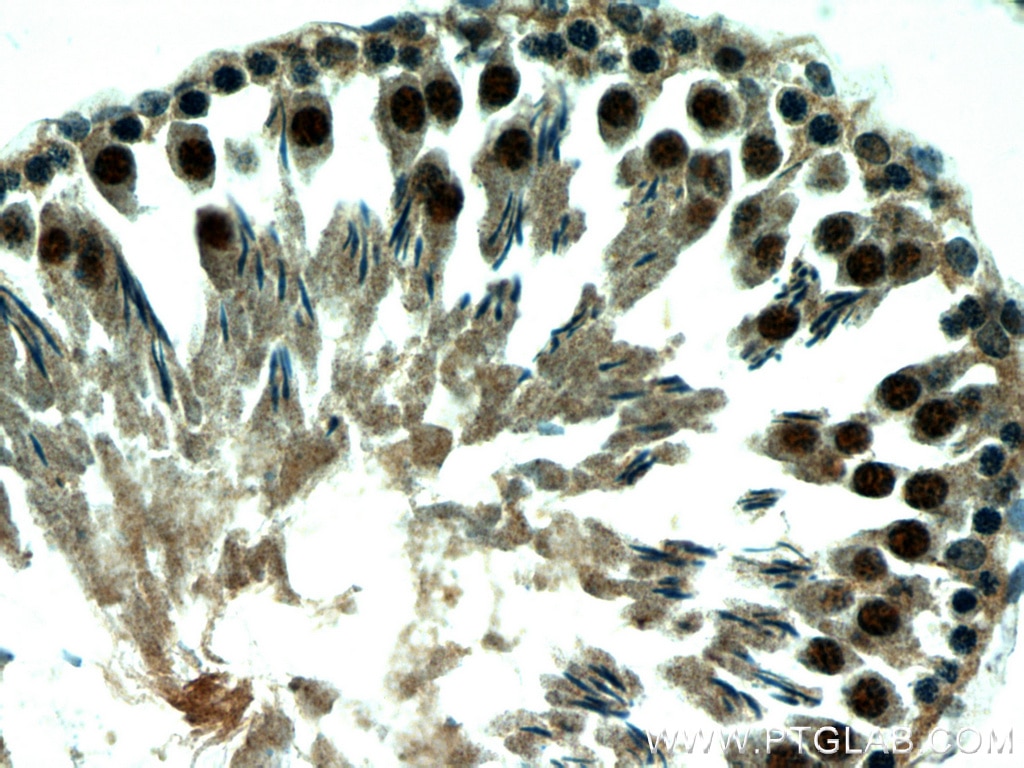- Phare
- Validé par KD/KO
Anticorps Polyclonal de lapin anti-XRCC4
XRCC4 Polyclonal Antibody for WB, IHC, IP, ELISA
Hôte / Isotype
Lapin / IgG
Réactivité testée
Humain, rat et plus (1)
Applications
WB, IHC, IF, IP, ELISA
Conjugaison
Non conjugué
N° de cat : 15817-1-AP
Synonymes
Galerie de données de validation
Applications testées
| Résultats positifs en WB | cellules HepG2, cellules COLO 320, cellules HEK-293 |
| Résultats positifs en IP | cellules HepG2 |
| Résultats positifs en IHC | tissu de cancer du sein humain, tissu d'intestin grêle de rat, tissu testiculaire de rat il est suggéré de démasquer l'antigène avec un tampon de TE buffer pH 9.0; (*) À défaut, 'le démasquage de l'antigène peut être 'effectué avec un tampon citrate pH 6,0. |
Dilution recommandée
| Application | Dilution |
|---|---|
| Western Blot (WB) | WB : 1:500-1:2000 |
| Immunoprécipitation (IP) | IP : 0.5-4.0 ug for 1.0-3.0 mg of total protein lysate |
| Immunohistochimie (IHC) | IHC : 1:50-1:500 |
| It is recommended that this reagent should be titrated in each testing system to obtain optimal results. | |
| Sample-dependent, check data in validation data gallery | |
Applications publiées
| KD/KO | See 2 publications below |
| WB | See 12 publications below |
| IHC | See 2 publications below |
| IF | See 1 publications below |
Informations sur le produit
15817-1-AP cible XRCC4 dans les applications de WB, IHC, IF, IP, ELISA et montre une réactivité avec des échantillons Humain, rat
| Réactivité | Humain, rat |
| Réactivité citée | Humain, souris |
| Hôte / Isotype | Lapin / IgG |
| Clonalité | Polyclonal |
| Type | Anticorps |
| Immunogène | XRCC4 Protéine recombinante Ag8606 |
| Nom complet | X-ray repair complementing defective repair in Chinese hamster cells 4 |
| Masse moléculaire calculée | 310 aa, 35 kDa |
| Poids moléculaire observé | 55 kDa |
| Numéro d’acquisition GenBank | BC005259 |
| Symbole du gène | XRCC4 |
| Identification du gène (NCBI) | 7518 |
| Conjugaison | Non conjugué |
| Forme | Liquide |
| Méthode de purification | Purification par affinité contre l'antigène |
| Tampon de stockage | PBS with 0.02% sodium azide and 50% glycerol |
| Conditions de stockage | Stocker à -20°C. Stable pendant un an après l'expédition. L'aliquotage n'est pas nécessaire pour le stockage à -20oC Les 20ul contiennent 0,1% de BSA. |
Informations générales
There are at least two pathways for eukaryotes to repair DNA double-strand breaks: homologous recombination and nonhomologous end joining(NHEJ). XRCC4 is one of the core machiney of NHEJ that required for double-strand break repair and V(D)J recombination. The DNA ligase IV(LIG4)-XRCC4 complex is responsible for the NHEJ ligation step, and XRCC4 enhances the joining activity of LIG4.
Protocole
| Product Specific Protocols | |
|---|---|
| WB protocol for XRCC4 antibody 15817-1-AP | Download protocol |
| IHC protocol for XRCC4 antibody 15817-1-AP | Download protocol |
| IP protocol for XRCC4 antibody 15817-1-AP | Download protocol |
| Standard Protocols | |
|---|---|
| Click here to view our Standard Protocols |
Publications
| Species | Application | Title |
|---|---|---|
Nat Commun Reciprocal regulation of RIG-I and XRCC4 connects DNA repair with RIG-I immune signaling.
| ||
Cancer Res Inhibition of ATM Induces Hypersensitivity to Proton Irradiation by Upregulating Toxic End Joining. | ||
PLoS Biol A long noncoding RNA sensitizes genotoxic treatment by attenuating ATM activation and homologous recombination repair in cancers. | ||
Cell Death Differ LRIK interacts with the Ku70-Ku80 heterodimer enhancing the efficiency of NHEJ repair. | ||
Phytomedicine Guiqi Baizhu decoction enhances radiosensitivity in non-small cell lung cancer by inhibiting the HIF-1α/DNA-PKcs axis-mediated DNA repair | ||
Toxicol Appl Pharmacol Polychlorinated biphenyl quinone induces oxidative DNA damage and repair responses: The activations of NHEJ, BER and NER via ATM-p53 signaling axis. |
Avis
The reviews below have been submitted by verified Proteintech customers who received an incentive for providing their feedback.
FH Alexandra (Verified Customer) (07-02-2024) | For plasmid expression it works fine with 1000x dilution, but for the detection of endogenous XRCC4 I recommend the use of 500x dilution.
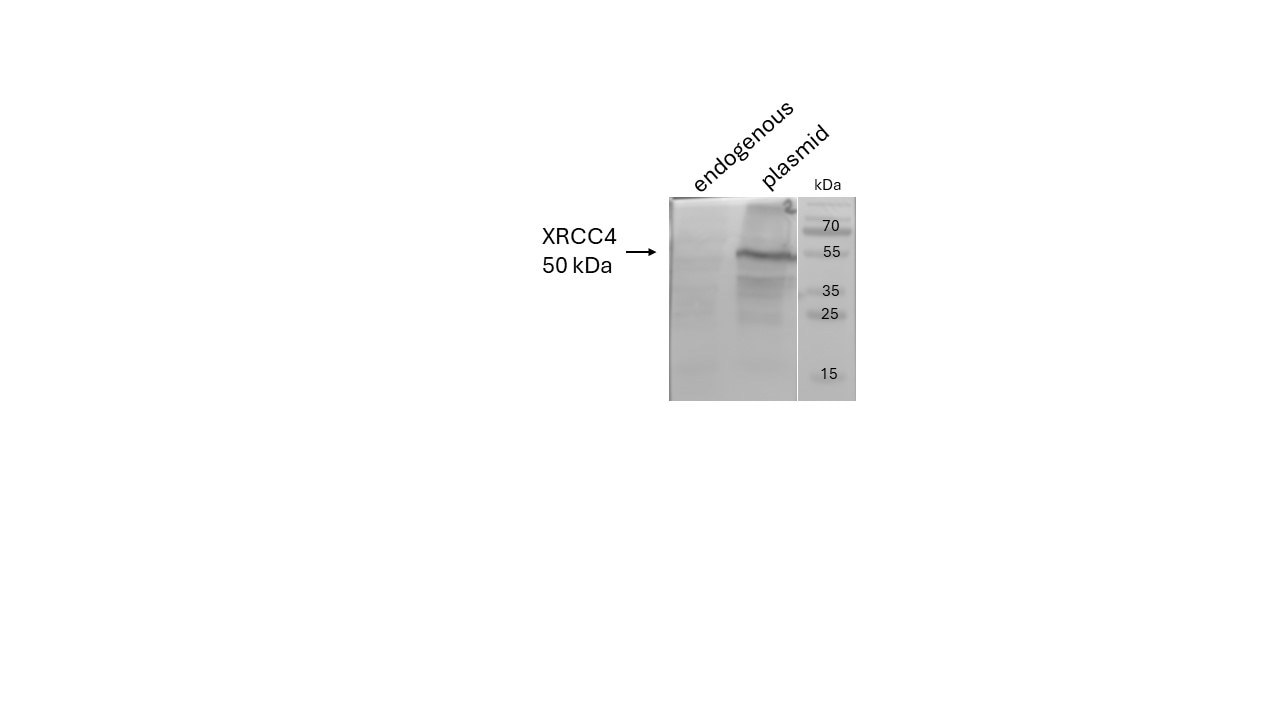 |
